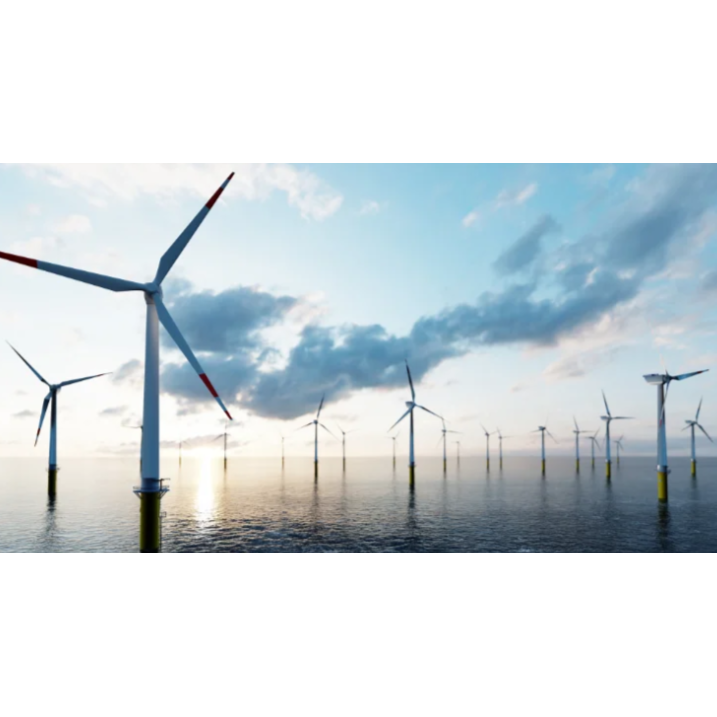China Energy Storage Network: Bloomberg New Energy Finance (BNEF) recently released a research report pointing out that in application scenarios where the continuous discharge time exceeds 8 hours, non-lithium battery long-term energy storage systems are inferior to lithium-ion battery energy storage systems.

According to the report, the global average capital expenditure costs for long-duration energy storage systems are $232/kWh for thermal energy storage systems, $293/kWh for compressed air energy storage systems, and $304/kWh for four-hour lithium-ion battery energy storage. Capital expenditures are expenditures made by companies to purchase, maintain or upgrade long-term assets. However, Yiyi Zhou, a clean energy expert at Bloomberg New Energy Finance (BNEF) and co-author of the report, said that studies show that China's long-duration energy storage systems have lower capital expenditure costs.
According to a study released by the California Energy Commission in January this year, if the current natural gas power plants are retained, the California Independent System Operator's grid will need up to 5GW of long-duration energy storage systems by 2045; if these natural gas power plants are retired, the demand for long-duration energy storage systems will soar to 37GW.
Bloomberg New Energy Finance (BNEF) studied a variety of long-duration energy storage technologies that can discharge continuously for more than 6 hours, including compressed air, pumped storage, thermal storage, gravity storage, flow batteries and lithium-ion batteries. Most of the cost data for these long-duration energy storage systems comes from energy storage projects deployed globally during 2018-2024.
The study shows that thermal energy storage systems are the long-duration energy storage technology with the lowest average capital expenditure cost in the world, with a cost of $232/kWh, followed by compressed air energy storage systems, with a cost of $293/kWh, and gravity energy storage systems have the highest global average capital expenditure cost of $643/kWh.
The report further pointed out that in non-Chinese markets, the installation costs of long-duration energy storage systems are higher: 54% higher for thermal energy storage systems, 66% higher for flow battery energy storage systems, and 68% higher for compressed air energy storage systems. This significant cost difference is mainly attributed to the widespread adoption of long-duration energy storage technologies in China.
Yiyi Zhou, co-author of the report, said: "While other countries are still in the early stages of commercializing long-duration energy storage technology, China has developed gigawatt-hour-scale long-duration energy storage projects driven by favorable policies, especially in compressed air energy storage and flow batteries. "
In contrast, China's compressed air energy storage system capital expenditure is 42% higher. Bloomberg New Energy Finance claims that this is mainly because it is a demonstration project rather than a commercial-scale energy storage project.
Bloomberg New Energy Finance pointed out in the report that due to the maturity of China's industry and the large-scale project scale, the operation and maintenance costs of long-duration energy storage systems deployed in China are often lower than similar energy storage systems in other countries and regions.
However, Curt VanWalleghem, co-founder and CEO of Hydrostor, a developer of compressed air energy storage systems, said: "China's domestic market conditions are difficult to replicate in other markets in terms of commercial feasibility. We do not believe that the large-scale deployment of long-duration energy storage systems in China is simply due to technological innovation or economies of scale, but is more likely closely related to factors such as low labor prices and government subsidies."
"Although China is likely to become an important long-duration energy storage market in the future, Hydrostor still focuses on ensuring that markets such as the United States, the United Kingdom, India and Australia can recognize the key role of long-duration energy storage systems in the continued reliability of the power grid and set clear timelines for the procurement and deployment of these technologies." He also said.
Bloomberg New Energy Finance (BNEF) pointed out in the report that Chinese-made lithium-ion batteries have significant price advantages. The study also found that currently in China, only a few long-duration energy storage technologies (such as long-duration energy storage systems that use natural caves to store compressed air) are cost-competitive with lithium-ion battery energy storage systems. This means that in future market competition, these non-lithium energy storage technologies need to continue to innovate and optimize to improve their cost-effectiveness and competitiveness.
Evelina Stoikou, senior associate for energy storage at Bloomberg New Energy Finance (BNEF) and co-author of the report, said in a statement that the higher cost of lithium-ion batteries produced outside of China means that the United States and Europe have an opportunity to invest in their own long-duration energy storage industry.
Stoikou added that in energy storage markets outside of China, more energy storage technologies such as flow batteries, compressed air, thermal energy storage, gravity energy storage and new pumped storage have been developed, partly because energy storage developers are committed to developing non-lithium energy storage technologies.
However, other energy storage technologies are unlikely to replicate the economies of scale of lithium-ion battery energy storage systems, and the decline in lithium-ion battery costs has benefited from the rapid adoption of electric vehicles.
[Editor: Gao Qian]
 Pages you might like
Pages you might like








 Exhibitions you may be interested in
Exhibitions you may be interested in
 Latest information
Latest information
 Follow official account
Follow official account
 Online support
Online support
 鄂ICP备2022017323号
鄂ICP备2022017323号
 鄂公网安备 42018502006493
鄂公网安备 42018502006493
 Launch Exhibition
Launch Exhibition
 Release information
Release information



 Today's topic
Today's topic









